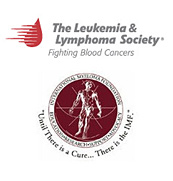- Hazardous Occupations
- Carpenter Health and Safety Hazards
- Chemical Dangers In The Workplace
- Construction Work Health and Safety Hazards
- Electrician Health and Safety Hazards
- Fiberglass Workers and Safety Hazards
- Firefighter Health and Safety Hazards
- Fuel Workers and Hematologic Malignancies
- Laboratory Technician Health and Safety Hazards
- Landscape Worker Health and Safety Hazards
- Painter Health and Safety Hazards
- Pest Controller Health and Safety Hazards
- Plumber Health and Safety Hazards
- Welder Health and Safety Hazards
- Blood Cancers
- Occupational Diseases
- Toxic Chemicals
- Acrylamide
- Benzene
- Benzene and Hematologic Diseases and Cancers
- Benzene Exposure
- Benzene and Acute Lymphocytic Leukemia
- Benzene and Acute Myelogenous Leukimia
- Benzene and Chronic Lymphocytic Leukemia
- Benzene and Chronic Myelogenous Leukemia
- Benzene and Hairy Cell Leukemia
- Benzene and Multiple Myeloma
- Benzene and Myelodysplastic Syndrome
- Benzene and Aplastic Anemia
- Benzene and Myelofibrosis
- Benzene and Thrombocytopenia
- Beryllium
- Diacetyl
- Fiberglass and Styrene
- Flame Retardants
- Flavorings
- Lead Poisoning
- Pesticides
- Solvents
- Resources
- Cancer Organizations
- Government Agencies
- Non-Government Org.
- Air Pollution Organizations
- Animal Rights Organizations
- Environmental Justice Organizations
- Environmental Law Organizations
- Environmental Organizations
- Human Rights Organizations
- Legal Aid Organizations in California
- Occupational Health Organizations
- Public Health Physician Organizations
- Social Justice Organizations
- Water Resources Organizations
- Universities
- Contact Us
Blog Categories
New Swedish Study Shows Acrylamide Likely Causes Esophageal Cancer
- Details
- Category: Health News
- Published on Sunday, 17 April 2011 17:20
![]()
Researchers from the Karolinska Institute in Stockholm, Sweden have published a population-based case-control study linking esophageal cancer to dietary acrylamide intake. They collected data on diet among 189 cases of esophageal adenocarcinoma, 262 cases of gastroesophageal junctional adenocarcinoma, 167 cases of esophageal squamous cell carcinoma, and 820 controls. Dietary intake of acrylamide exposure was assessed from a food-frequency questionnaire and categorized into quartiles based on the consumption among the control participants. Unconditional logistic regression was used to calculate odds ratios (OR) with 95% confidence intervals (CI), with multivariable adjustment for known risk factors. Among participants in the highest quartile of acrylamide exposure compared to the lowest, the adjusted risk of all esophageal tumors combined was significantly increased (OR 1.23, 95% CI 1.02-1.75), particularly among overweight or obese persons (OR 1.88, 95% CI 1.06-3.34). Increased point risk estimates were found for each type of esophageal cancer, but the association with esophageal squamous cell carcinoma seemed stronger and was statistically significant, particularly among non-smokers in the highest quartile of acrylamide exposure (adjusted OR 2.82, 95% CI 1.16-6.87). Regarding squamous cell carcinoma only, a dose-response association was identified (p for trend 0.01). Based on these data, the investigators concluded that dietary intake of acrylamide increases the risk of developing esophageal cancer.
Lin, Y., et al., “Dietary acrylamide intake and risk of esophageal cancer in a population-based case-control study in Sweden.” Int. J. Cancer. 2010 Aug 16; [Epub ahead of print]




